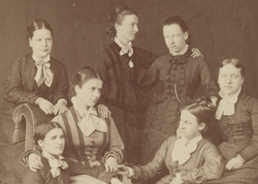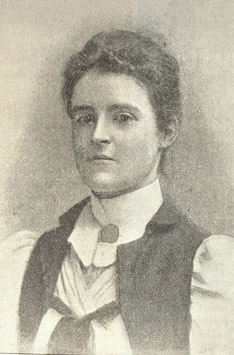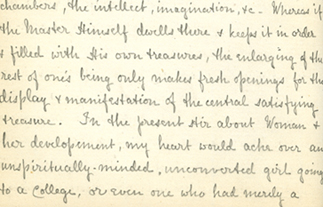| |
|
As the century progressed many women began to question views that prevented them entering education and professional life. Educational pioneers were led by Emily Davies (1830–1921) who founded Girton College, Cambridge. They saw that through education, women would be able to bring about fundamental changes to women’s place in society. This would advance the notion of women as equals to men.

Constance Maynard at Girton College, Cambridge with fellow students, c1875.
Courtesy of Queen Mary, University of London Archives.
In 1872, Maynard joined a new college for women at Hitchin, which soon after became Girton College, Cambridge. During her time there, she developed a vision of a college which would not only promote higher education for women, but also acknowledge a commitment to Christianity. She later became the first Mistress of Westfield College.
|
|

People’s Palace Library and Reading Room 1890,
now known as The Octagon.
Courtesy of Queen Mary, University of London Archives.
Women played a prominent role in managing the People's Palace Library from its inception, and, in so doing, challenged the prevailing views that discouraged women from working. Between 1887 and 1894, women staff of the Library included: Frances Low, Constance Black, and Minnie Stewart Rhodes James. |

Minnie Stewart Rhodes James c1889.
Courtesy of The CILIP Archive, UCL Library Services, Special Collections.
Minnie James (1865-1903) was a Librarian at the People’s Palace for East London. She is remembered as an outspoken advocate of librarianship as a profession for women and of the training of library assistants. |
|
|





